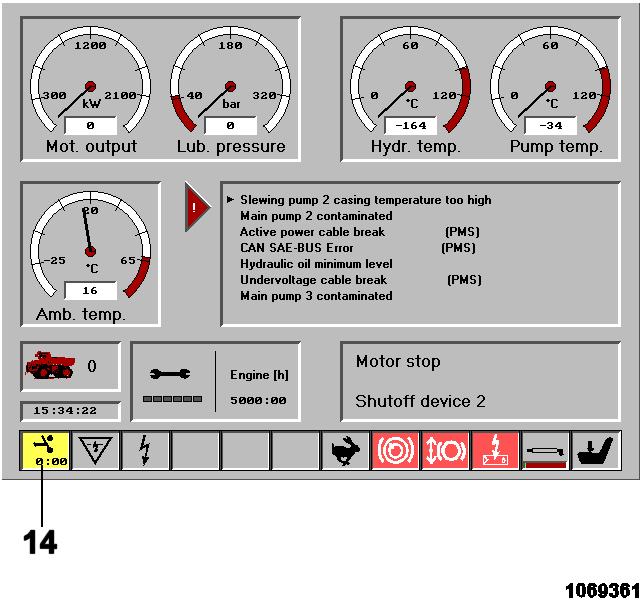
1 minute read
OPERATING INSTRUCTIONS RH 340 Electric OPeration
Switching the electric motor off
During breaks in operation and at the end of each shift, the working equipment must be lowered onto the ground.
The electric motor must NOT be switched off until the equipment is resting on the ground.
To avoid straining the vacuum contactor, the electric motor should be shut down only when load-free, i.e. without any of the hydraulic units being activated at the same time via the control valve.

Actuate switch-key (52, Fig. 2-74:). The electric motor starts running down.
Turn key in key-switch (32) counter-clockwise and withdraw.
The control voltage is switched off.
The electric motor only can be switched on again, after the time-out period (30 minutes after last switching on) is over (see: "Time-out before restart", "Before switching on the electric motor" and "Switching on the electric motor").
Time-out before restart
During starting period the electric motor heavily warms up. Therefore it is not allowed to switch it on and off at will. By means of an electronical timeout circuit (PLC) the electric motor can be switched on only three times a hour (time-out period is 30 minutes).
The 30 minutes period means the time from switching on the electric motor up to the next switching on, e. g. Electric motor is switched on, runs 20 minutes and then is switched off. Now the time-out period is 10 minutes before restart.
After running more than 30 minutes without interruption the electric motor can be switched on without any time-out period.
PLC prohibits switching on the electric motors until they are cooled down.
Monitoring lamp (14, Fig. 2-75:) on the BCS display is flashing in yellow colour until the time-out period is over. The remaining time is displayed also.
Monitoring lamp lit up in green colour when the time-out period is over and PLC enables switching on the electric motor.


